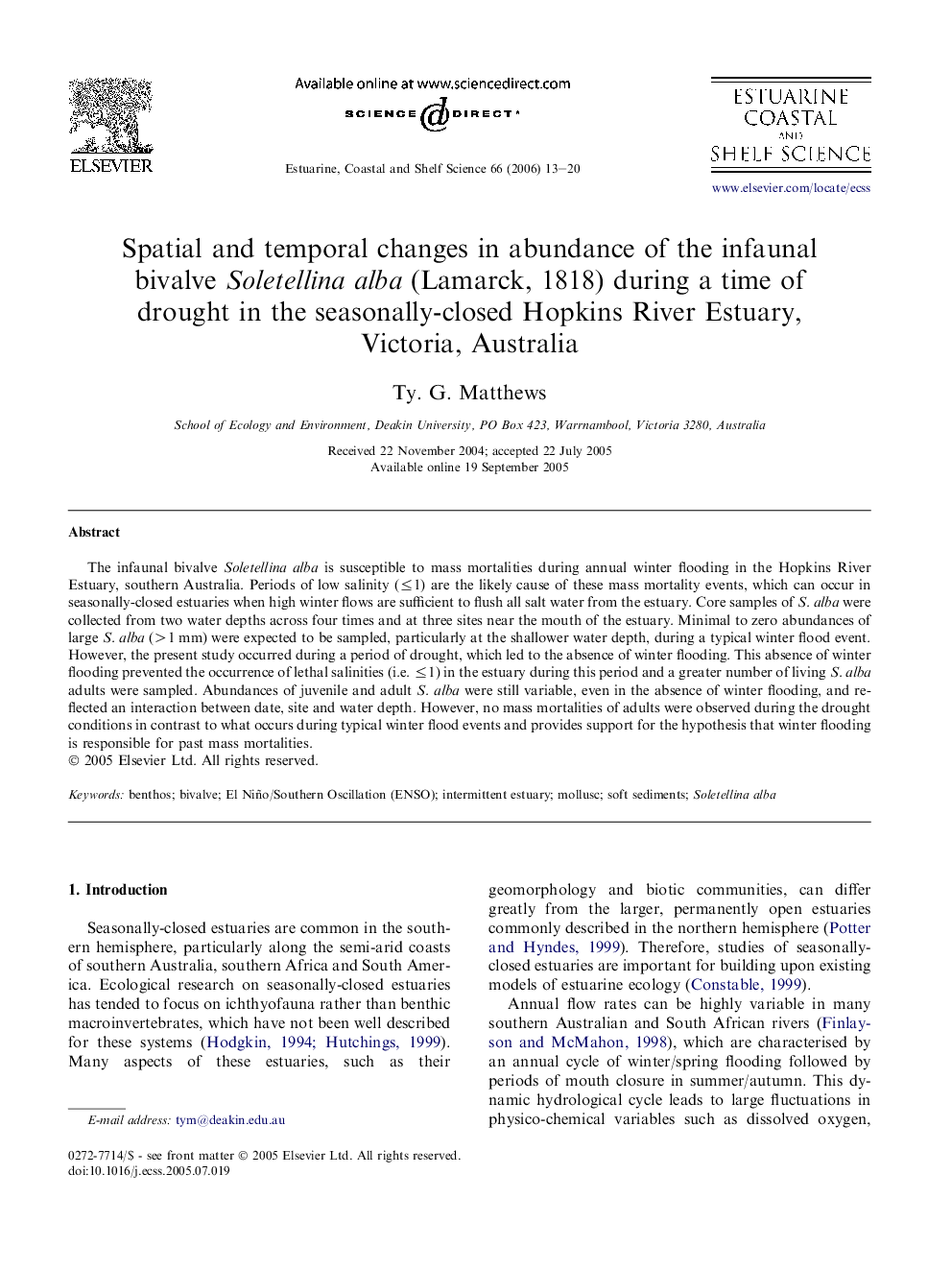| Article ID | Journal | Published Year | Pages | File Type |
|---|---|---|---|---|
| 4542557 | Estuarine, Coastal and Shelf Science | 2006 | 8 Pages |
The infaunal bivalve Soletellina alba is susceptible to mass mortalities during annual winter flooding in the Hopkins River Estuary, southern Australia. Periods of low salinity (≤1) are the likely cause of these mass mortality events, which can occur in seasonally-closed estuaries when high winter flows are sufficient to flush all salt water from the estuary. Core samples of S. alba were collected from two water depths across four times and at three sites near the mouth of the estuary. Minimal to zero abundances of large S. alba (>1 mm) were expected to be sampled, particularly at the shallower water depth, during a typical winter flood event. However, the present study occurred during a period of drought, which led to the absence of winter flooding. This absence of winter flooding prevented the occurrence of lethal salinities (i.e. ≤1) in the estuary during this period and a greater number of living S. alba adults were sampled. Abundances of juvenile and adult S. alba were still variable, even in the absence of winter flooding, and reflected an interaction between date, site and water depth. However, no mass mortalities of adults were observed during the drought conditions in contrast to what occurs during typical winter flood events and provides support for the hypothesis that winter flooding is responsible for past mass mortalities.
